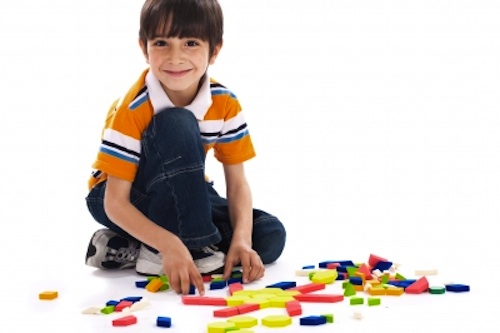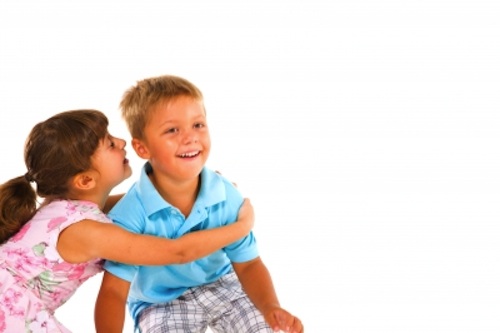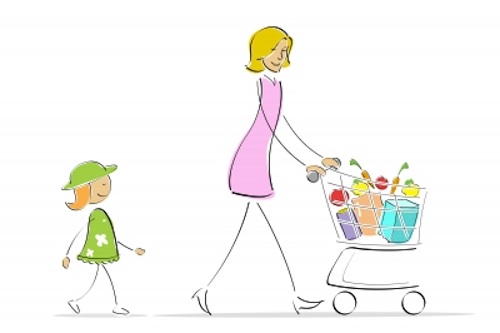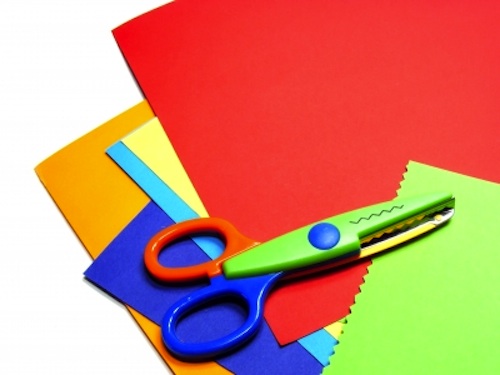5 Ways to Bring Outdoor Activities Indoors
Have you read as many children’s books as you can stand and downed hot coco until it’s coming out of your ears? Stop longing for the long days of summer and bring some outdoor activities indoors with these 5 fun activities for toddlers.
Hopscotch inside
Who says you need a driveway for hopscotch? One of the easiest ways to bring outdoor activities indoors is by making a hopscotch board. Simply head to your local craft store, unroll about 10 feet of paper and use some markers to draw a colorful hopscotch board on it. Then let your cooped up kiddos jump around and let loose on the new toy.
Throw a pool party
Throw on some reggae, pour some pineapple juice and dig those swimsuits out of storage. Then grab your kids and pile into the bathtub, your own, personal pool. Invite Barbies and action figures to join! You can even blow up a mini beach ball to toss around. Just remember that this pool party should remain soap-free because a slippery bathtub can be dangerous.
Create tropical creatures
Use pipe cleaners to put together a whole jungle of tropical critters. From lizards to leopards, you’ll have your own rainforest in no time. Just start with a loop for each animals’ heads, coil around for their bodies and stick a few cut pieces on for the legs, tails, and tongues. You can even encourage your little ones to make trees, grass or water for their pipe cleaner animals to live in.
Stylish sunglasses
Buy a few cheap pairs of sunglasses and help your children glue summery decorations to them. Maybe you want to add shells, sequences and rhinestones. What better way to brighten a grey winter day?
Picnic time
Have an indoor picnic. Spread out a blanket in your living room and chow down on summer favorites like sandwiches, fresh fruit and lemonade. Plus, cleanup’s a breeze. When you’re done, just throw the blanket in the washer.
Sources:
-“Hopscotch Mat” Martha Stewart
-“Pipe Cleaner Creatures” Martha Stewart
-“Fancy Shades” Martha Stewart
-“20 Indoor activities for kids besides TV” Simple Mom
-“17 Great Indoor Games and Activities” Parents.com
-Photo courtesy of stockimages/freedigitalphotos.net
10 Signs that You Found the Best Daycare
You hunted high and low, near and far to find the perfect daycare for your child. You’re pretty sure you did a good job and overall are pleased with your pick, but every now and then a gnawing pang of worry pops into your stomach. How can you be sure you made the right choice? Here are a few signs that tell you that you found the best daycare possible:
1. The staff calls both you and your child by your names when you arrive. And they remember to ask things like, “How was the camping trip this weekend?”
2. Your good friend, family member or trusted coworker highly recommended the place.
3. There are lots of staff member and the worker to child ratio is very high, allowing for more one-on-one attention.
4. They have one of those annoying lists of rules that prohibit things like peanuts. Although often long and sometimes irritating, those rules mean that the daycare really cares about your child’s health and safety.
5. You checked with the state and they meet all of the health and safety codes.
6. They remind you when you’re running low on diapers or let you know when your child didn’t finish eating. Communication is priceless.
7. The daycare doesn’t offer unwanted advice too often. While you want to stay in the loop and know what’s going on, you probably don’t want someone telling you how to parent.
8. Parents of the other children seem friendly and you’ve either already organized play dates or are planning to soon.
9. The daycare has a low turnover rate. That’s how you know the staff loves what they do and care about their work.
10. Your child comes back from daycare excited. Don’t worry if he or she is hesitant to go in the morning; that’s perfectly normal. But if they come home bubbly and thrilled to tell you about all the cool stuff they did, you know you’ve got a winner on your hands.
Sources:
-“8 Tips for Choosing Child Care.” Parents.com
-“What Makes a Great Daycare.” Parents.com
-“Daycare Dilemmas.” Parents.com
-Photo courtesy of photo stock/freedigitalphotos.net
Mommy Math: Children and Reading
Did you know that the amount of parents who read to their pre-kindergarteners daily has decreased by 5% in recent years? Yet college enrollment seems to be on the up-and-up or at least it was until 2010. MomTrusted digs into the statistics behind children and reading, from reading scores to college enrollment:
New Study Finds Happier Kids
A new study found that kids who perform acts of kindness are happier and more accepting.
Researchers in Vancouver, Canada studied how performing kind acts influenced behavior, emotions and even popularity of 9 to 11 year-olds. The researchers had two groups: one was asked to visit three places each week, while the other was asked to perform three random acts of kindness each week.
The experiment lasted for four weeks and, in the end, when compared to previous test results, both groups of children were deemed happier. The ones who performed random acts of kindness, however, were also deemed more accepting of their fellow classmates.
Researchers believe that because the acts of kindness were intentional and planned, they created more positive, accepting attitudes among the children. Observers believe that this could be a solution to bullying in schools. By encouraging kind acts in children and creating more open-minded attitudes, the hope is that the acceptance will spread throughout school children.
Sources:
-“Acts of Kindness Make Kids Popular.” Parenting.com
-“Random Acts of Kindness Can Make Kids More Popular.” NPR
-Photo courtesy of Ambro/freedigitalphotos.net
Advice for Smooth Sailing at the Grocery Store
We’ve all been there. You’re strolling down the produce isle and you can sense a meltdown coming from your kiddo. You try to hurry, but you’re only halfway down your grocery list. Do you abandon cart and run for the car? Or do you put on a smile and pretend that your kid isn’t screaming at the top of his lungs? MomTrusted has some advice for dealing with public meltdowns and how to avoid them in the first place. Think of it as your guide to smooth sailing at the grocery store:
Avoid meltdowns by avoiding boredom
One of the classic reasons behind a tantrum is just plain boredom. Grocery shopping can be boring for little ones so here are a few ways to make the chore as much fun as possible:
-Have your little one help you find what you’re looking for by hosting a scavenger hunt.
-Kids love the scales at the grocery store. Plus, they’re great learning tools! Ask them to help you weigh the fruits and veggies.
-Help teach counting by writing the objects on your list nice and big and crossing them off as you go. Then, ask your child how many items you have left to grab.
-When you’re ready to checkout, ask your little one to help you sort your items as you put them on the conveyer belt. You can organize by size, shape or color.
How to handle grocery store meltdowns
If it’s too late and your child is already crying and screaming loud enough for the whole store to hear, don’t panic. Here are a few ways to handle a public, grocery store tantrum:
-Stay calm. Reacting emotionally will only trigger strong emotions from your child.
-Do not cave. If he or she is crying because they want a piece of candy, do not give them the candy! You’ll only be reinforcing poor behavior and creating more work for yourself down the road.
-If it’s really disruptive and not ending, step outside or take your little one to the restroom until they calm down.
-Ignore looks or negative words from strangers. It happens to the best of us.
-Apologize. A screaming, crying child can be embarrassing because we all know how disruptive they are so apologize to fellow customers. While they may not love the meltdown, they’ll certainly appreciate you acknowledging it.
Sources:
-“Great Games for the Grocery Store.” Disney Family
-“I’m embarrassed by my child’s public tantrums. What can I do?” Baby Center
-“How to handle public tantrums.” Circle of Moms
-Photo courtesy of digitalart/freedigitalphotos.net
Easy Crafts: Make an Educational Felt Board
Looking for some easy crafts to keep you and your little one busy? Check out this felt board that’s both educational and fun. You can use it to teach colors, shapes, letters and more.
What you need:
-Different colored pieces of felt
-Large picture frame
-One plain piece of adhesive felt about one inch l inch larger than the frame
-Scissors
-2 pieces of cardboard board the ½ inch smaller than the frame
-Duct tape
-Kraft paper
Instructions:
1. Remove and discard of the glass from the frame.
2. Cut about 1 inch of the corners off of the large piece of adhesive felt.
3. Tape the felt around the cardboard.
4. Place the felt-covered board within the frame.
5. Add a second piece of cardboard to the back for extra support.
6. Secure with kraft paper and duct tape.
7. Cut fun shapes out of the different colored pieces of felt. Here are a few ideas:
-Letters
-Numbers
-Basic shapes
-Animals
Sources:
-“Felt Board for Kids.” Martha Stewart
-Photo courtesy of Grant Cochrane/freedigitalphotos.net
Baby Development: What to Look for in Babies 4-7 Months
When your baby hits four months, they’ll begin to go through all sorts of physical and mental growth. From new movements to name recognition, you’ll be amazed at the baby development that your little one goes through in a few short months. MomTrusted has summarized a few exciting milestones to keep an eye out for:
Physical developments
Babies will develop remarkably in physical ways during this stage of growth. Some typical physical developments include:
-The ability to roll right to left
-Some may even develop the ability to roll over to their stomachs
-Color vision
-Clearer vision in general
-Sitting with support and possible on his or her own
-The ability to put support on his or her legs
-Reaching
-Grabbing and transferring with alternating hands
-Raking, or pulling items closer
Mental developments
In addition to going through some big physical changes during these three months, babies will also have tons of new information shaping their minds. Here are some of the cognitive developments that you can expect:
-Spotting covered, “hidden” objects
-Starting to understand and respond to words like “no” and his or her name
-Can keep an eye on moving objects
-Beginning to recognize emotion in voices
-Responding to sounds with his or her own baby noises
Social, language and emotional developments
Finally, between four and seven months, babies will begin to grow socially and emotionally, starting with very small, but powerful signs including:
-Babies’ language skills will increase through babbling consonants.
-He or she will begin to interact with you or others through the form of play.
-Babies start to see, recognize and enjoy their own reflections.
-Not only will babies begin to recognize emotion through voice, but they’ll respond to others’ emotions, often by imitating them.
Sources:
-“Growth and Development Milestones: 4-7 months” parents.com
-“Infant Development: Milestones 4 to 6 Months” Mayo Clinic
-Photo courtesy of magerymajestic/freedigitalphotos.net


















